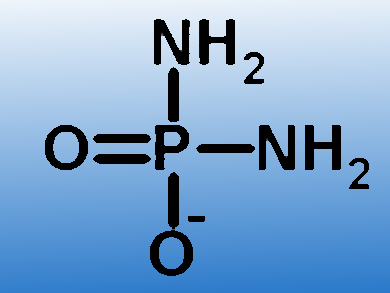Well over 3.5 billion years ago, the first living cells have been created on Earth. But where and how this happened is still unclear.
Ramanarayanan Krishnamurthy, Scripps Research Institute, La Jolla, CA, USA, and colleagues have found in an experiment that diamidophosphate (DAP, pictured) reacts with a wide variety of biomolecule building blocks and can assemble them into larger chains. Only an aqueous solution of the building blocks and the catalyst imidazole are needed. This was most likely present in the primordial soup.
If DAP is added to a solution containing the four nucleotide bases of RNA, it will phosphorylate it and assemble it into short RNA chains. DAP also combines single fatty acids and glycerol to form lipids. And in the experiments, DAP combined the amino acids glycine, aspartic acid, and glutamic acid into short peptide chains by phosphorylation.
Whether DAP was actually present in the primordial soup is difficult to prove after more than 3.5 billion years. However, the scientists think it is very likely. DAP can work under aqueous conditions and in a wide range of temperatures. Thus, the molecule could be the key to the development of the first cells.
- Phosphorylation, oligomerization and self-assembly in water under potential prebiotic conditions,
Clémentine Gibard, Subhendu Bhowmik, Megha Karki, Eun-Kyong Kim, Ramanarayanan Krishnamurthy,
Nature Chem. 2017.
https://doi.org/10.1038/nchem.2878

